Tools used when rawhiding a saddle tree
We are no longer building saddle trees, but we have two videos about how Western saddles fit horses available on our westernsaddlefit.com website.
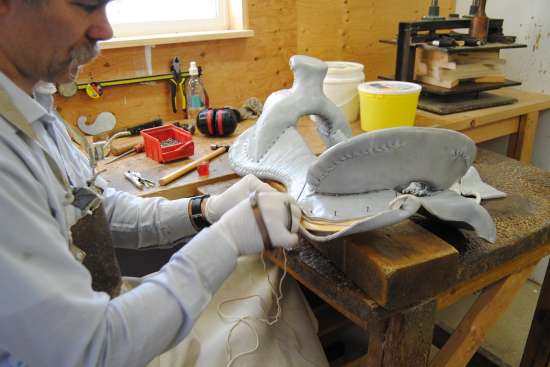
Today was another day of rawhiding for Rod. Here he is almost finished rawhiding this Wade tree that will be heading to southern Alberta when it is dry. I figured in this post I would show you some of the “tools of the trade” Rod uses when he rawhides trees.
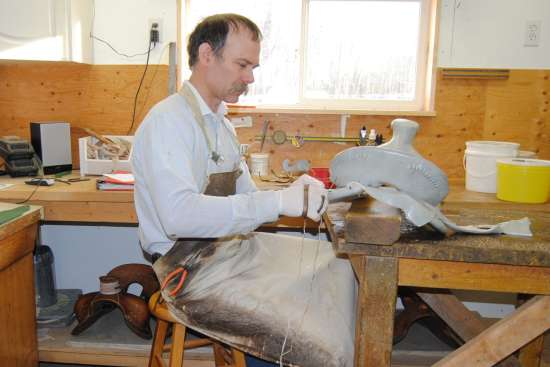
Here you can see a couple of constantly used tools. On the back of Rod’s right hand are the straps that hold his palm protector in place. It is a piece of metal encased in leather that he uses to push the needle through the rawhide. Very necessary if you want to have a palm left at the end of the day! The other tool is the pair of needle nose pliers below his elbow that look like he just dropped them.
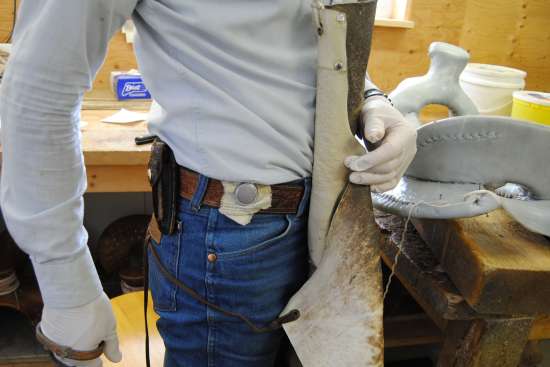
Actually, they stick there to the magnetic belt clip he wears under his apron. The clip is from Lee Valley Tools, and the scrap of rag underneath it is to protect his hand made belt from being constantly scratched up.
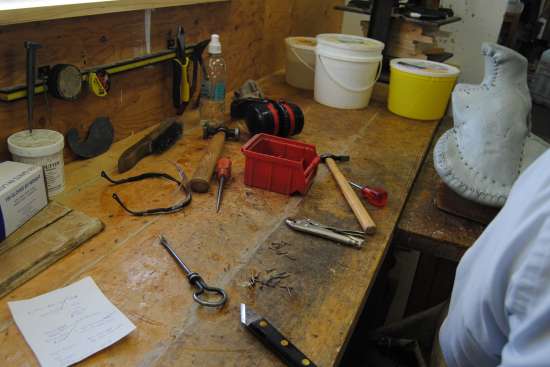
On the bench next to him he lays out his tools in a precise order. (Good thing Rod is a pretty organized guy. Otherwise we would drive each other crazy!) There are a number of tools which fall into the holding, cutting, marking category. The vise grips make up the holding category. Wet rawhide is very slippery stuff, so when he really needs to hang onto a smaller section and fingers aren’t enough, he uses the vice grips to “get a grip”. In the cutting category is his SHARP rawhide knife (also from Lee Valley). I know better than to touch this one for any reason whatsoever. There are also two awls. The short one is dull. It marks but doesn’t cut. He uses that to make lines to follow when nailing the cantle and around the fork.
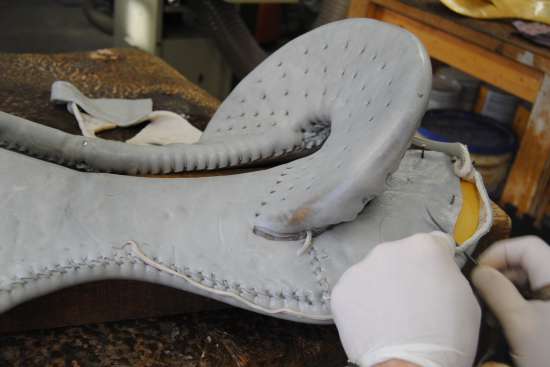
The long awl is sharp and used to enlarge the hole he first pokes with the needle at the front corner of the cantle for the cantle thong to go through. It is one of the tools in the shop that basically has a single purpose, but is needed for that purpose.
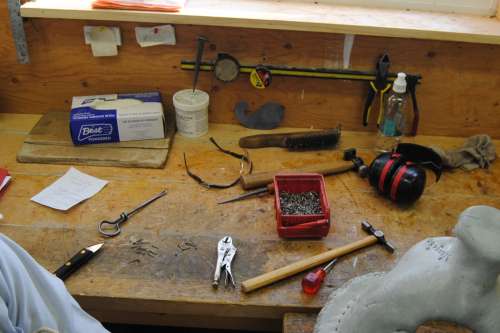
Most of the rest of the tools have to do with nailing. In the red container are the 5/8” long, stainless steel, ring shanked nails he uses on most of the tree. He keeps his nail set in the front of that container. In the old saddle butter tub next to the box of gloves are the 7/8” long nails of the same type he uses in the cantle thong where he needs that extra length. The smaller hammer is his main nailing hammer, but he uses the larger one on the nail set when he gets to setting the nails. This is also the hammer he uses for pounding down the seams as the trees dry. On the bench between the knife and vice grips are the hand shoe tacks he uses for temporarily holding the hide in place prior to stitching. His tack puller (used when things don't go just exactly right...) is a really good design – also from Lee Valley Tools. (Are you beginning to see a trend here?)
For protective gear, he uses the gloves a lot of the time, especially when he is stitching. The bacteria in rawhide can cause infections and even give you blood poisoning very easily and those gloves have saved a few doctor’s visits over the years for sure. (We also keep disinfectant in the shop for when those invariable pokes and nicks do happen. Then he can clean up right away.) Rod has also recently begun wearing eye protection for when he is starting nails. Every now and then they go springing out in different directions. When I asked why his answer, “Well, when you think for long enough about what would happen if one of these finally hit your eye…” And the hearing protectors? They are there for when I’m doing up wood and need to turn on some equipment. He keeps them handy for when I tell him to “put on your ears!”
